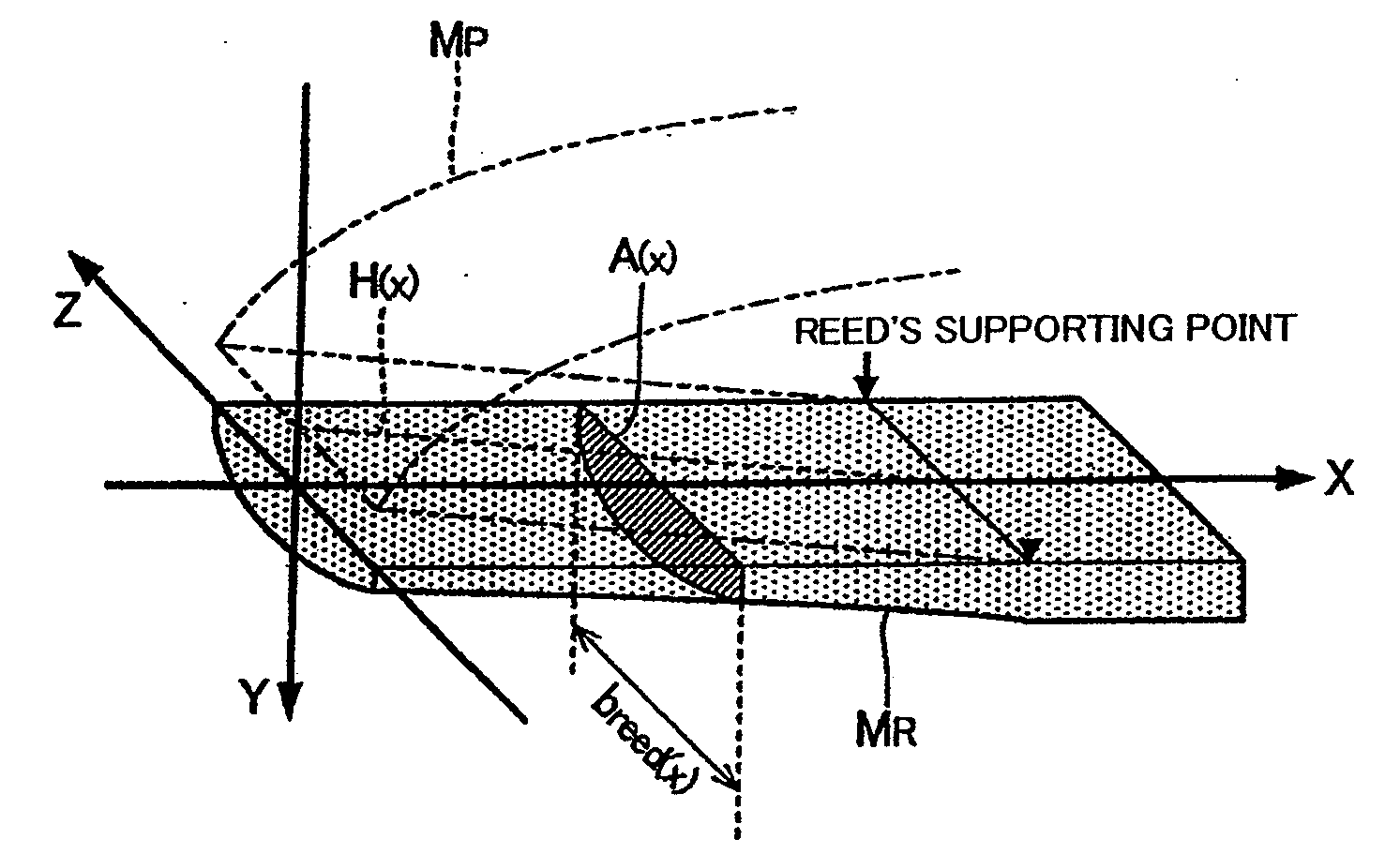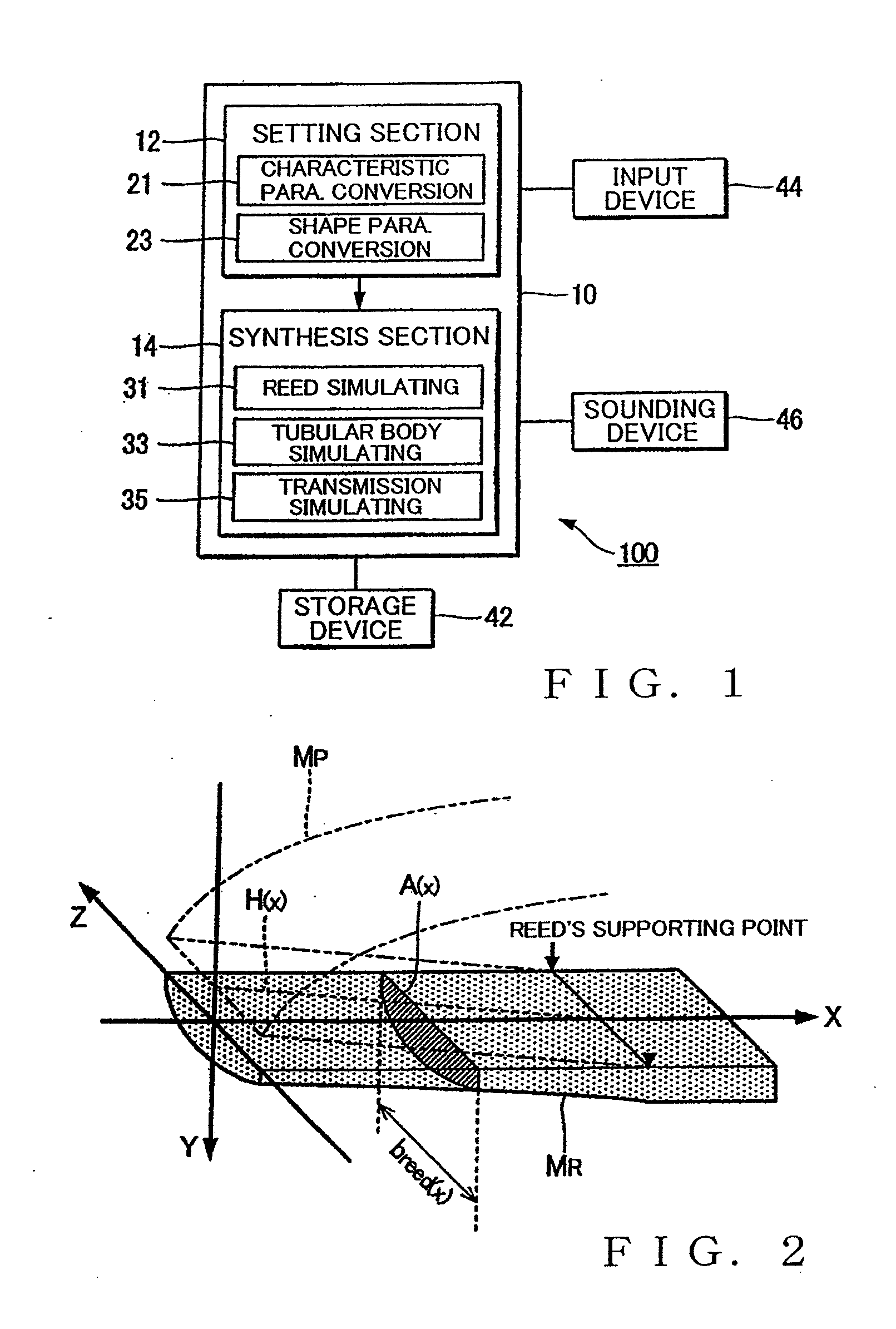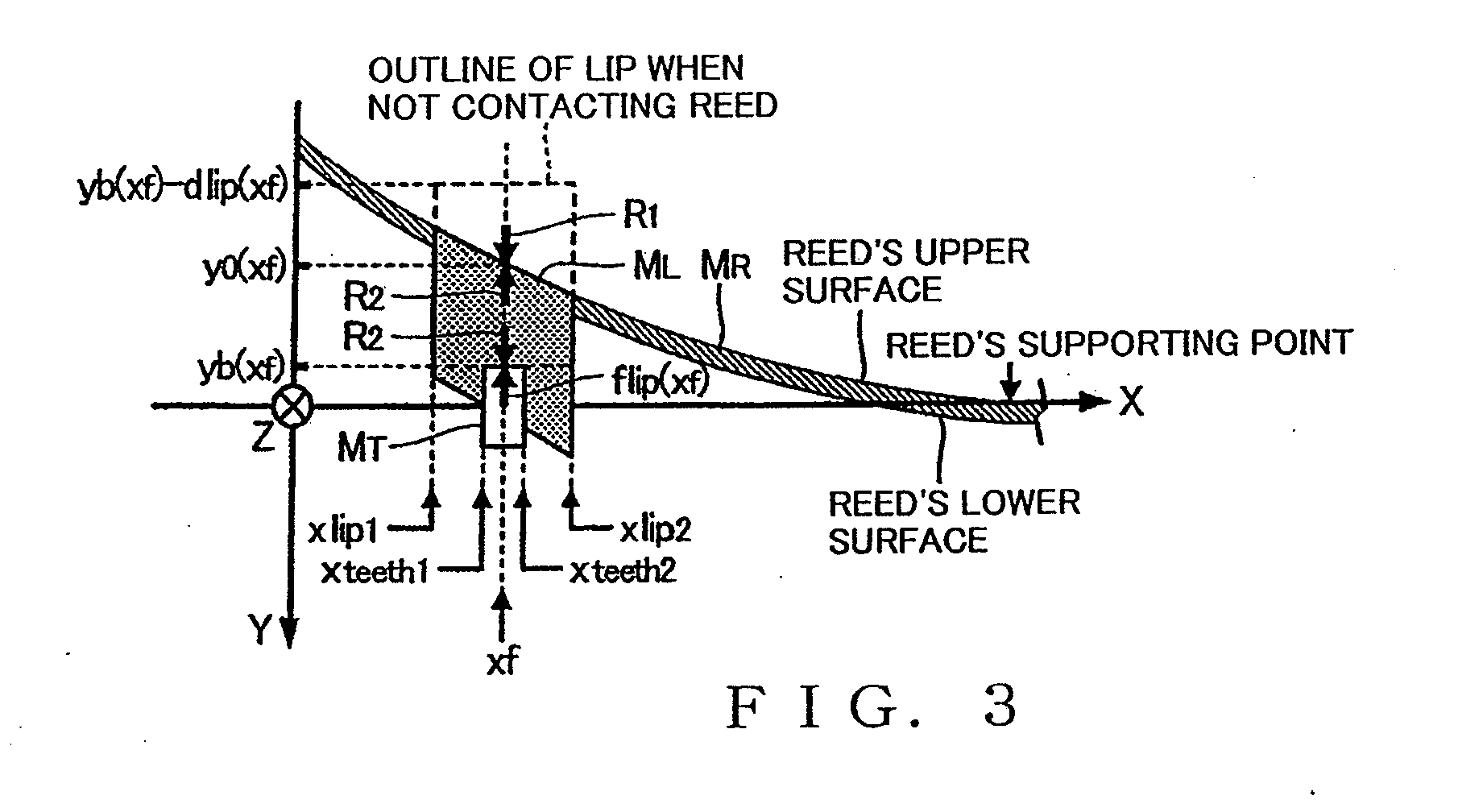Tone synthesis apparatus and method
a tone and apparatus technology, applied in the field of tone synthesizers, can solve the problems of inability to reproduce the reed of an actual wind instrument faithfully, and it is difficult to synthesize tones sufficiently close to the reed of an actual wind instrument, so as to achieve accurate reproduction, and accurate synthesizing of tones.
- Summary
- Abstract
- Description
- Claims
- Application Information
AI Technical Summary
Benefits of technology
Problems solved by technology
Method used
Image
Examples
first embodiment
[0034]FIG. 1 is a block diagram showing an example setup of a first embodiment of a tone synthesis apparatus of the present invention. This tone synthesis apparatus 100 is constructed to synthesize tones by simulating, through arithmetic operations, the tone generating principles of a single-reed wind instrument, such as a saxophone or clarinet. As shown in FIG. 1, the tone synthesis apparatus 100 is implemented by a computer system that comprises an arithmetic operation processing device 10, a storage device 42 and a sounding device 46.
[0035]The arithmetic operation processing device, such as a CPU (Central Processing Unit) 10, executes programs, stored in the storage device 42, to generate and output tone data representative of a time-varying waveform of a wind instrument (i.e., temporal variation of sound pressure). The storage device 42 stores therein programs for execution by the arithmetic operation processing device 10 and data for use by the arithmetic operation processing d...
second embodiment
[0131]Next, a description will be given about a second embodiment of the present invention. Whereas the first embodiment has been described above in relation to the case where the spring constant klip(x) does not depend on the pressing force flip(x) from the teeth MT, the second embodiment uses a spring constant klip(x) (x, flip(x)) that depends on the pressing force flip(x). In the following description of the second and other embodiments, similar elements to those in the first embodiment are indicated by the same reference numerals and characters as used for the first embodiment and description of these similar elements are omitted here as necessary to avoid unnecessary duplication.
[0132]Relationship between the spring constant klip(x) (x, flip(x)) of the lip ML and the pressing force flip(x) is determined through actual measurement. FIG. 14 is a diagram explanatory of how the spring constant klip(x) (x, flip(x)) is measured. As shown in FIG. 14, an outer surface of a test piece 8...
third embodiment
[0138]In the above-described first embodiment, the internal resistance μlip(x) of the lip ML and the internal resistance μreed(x) of the reed MR take fixed values that do not depend on the position x. However, in a third embodiment to be described below, the internal resistance μlip(x) of the lip ML and the internal resistance μreed(x) of the reed MR are varied in accordance with the position x.
[0139]If the horizontal width blip—sample of the lip sample in Mathematical Expression (a3) above is substituted by a horizontal width blip(x) corresponding to the position x, the following Mathematical Expression (a3-1) is derived:
μlip(x)=tanδlipmlip(x)·klip(x)=tanδlipρlip·blip(x)·dlip(x)·Elipblip(x)dlip(x)=tanδlip·blip(x)·ρlip·Elip(a3-1)
[0140]Similarly, for the internal resistance μreed(x) of the reed MR, there can be derived the following Equation (a4-1) where the sectional area A(x) of the reed MR that varies in accordance with the position x and the spring constant kreed(x) are variables...
PUM
 Login to View More
Login to View More Abstract
Description
Claims
Application Information
 Login to View More
Login to View More - R&D
- Intellectual Property
- Life Sciences
- Materials
- Tech Scout
- Unparalleled Data Quality
- Higher Quality Content
- 60% Fewer Hallucinations
Browse by: Latest US Patents, China's latest patents, Technical Efficacy Thesaurus, Application Domain, Technology Topic, Popular Technical Reports.
© 2025 PatSnap. All rights reserved.Legal|Privacy policy|Modern Slavery Act Transparency Statement|Sitemap|About US| Contact US: help@patsnap.com



